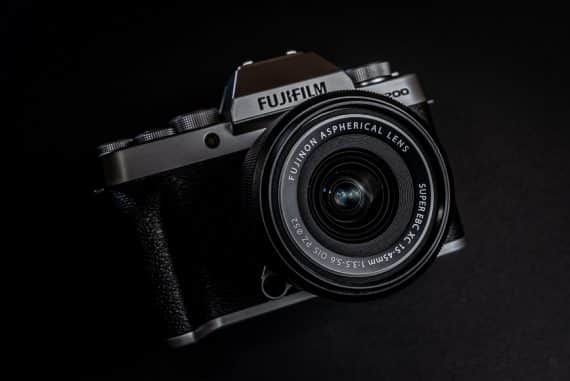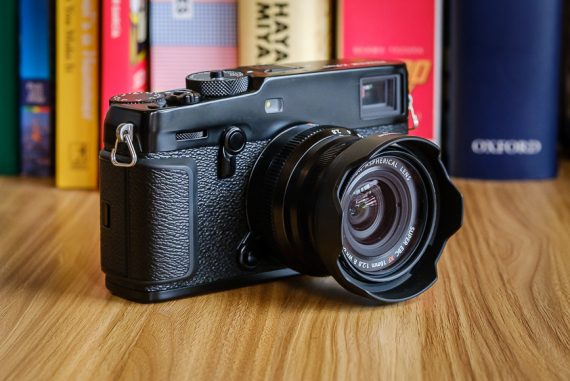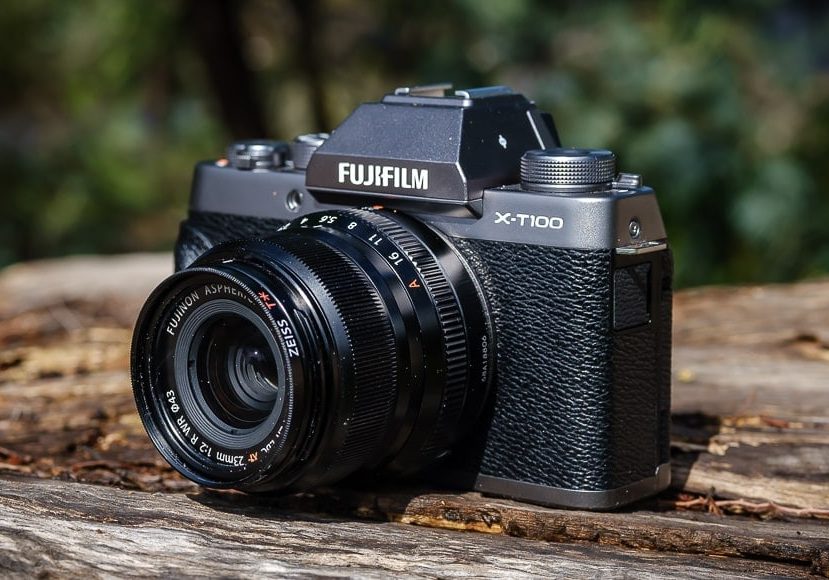
Fujifilm X-T100 Digital Mirrorless Camera Review
In depth real world Fujifilm X-T100 review for photographers needing an entry level, affordable compact mirrorless camera. Check out our thoughts!
For lovers of the retro look of Fujifilm cameras, or for those looking for a feature-packed entry-level compact Fujifilm camera, the Fujifilm X-T100 is a winning combination of style and function.
Borrowing attractive styling and design from the larger X-T30 and flagship X-T3 bodies, this feature-packed compact camera is so much more than just a well-styled piece of technology, and provides a clear gateway to eventually stepping up to a higher-level Fujifilm cameras.
With functions that will appeal to the screen-swiping selfie-taking generation, Fujifilm clearly introduced this model to give smartphone users an alternative.
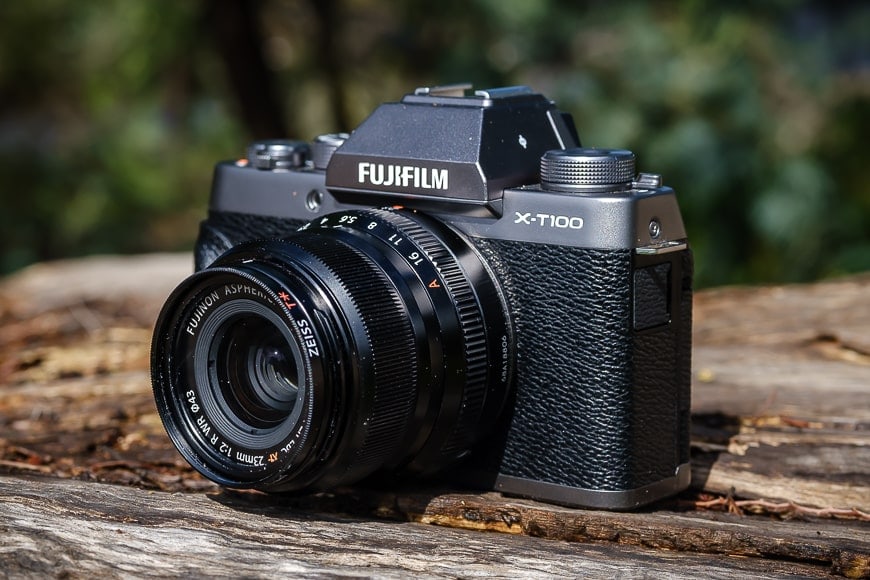
Feature-packed pocketable camera with a stylish, retro vibe and great lens options.
(Even their marketing for this camera was very heavily directed at a youth market wanting a pocketable camera.)
With a highly customisable set of command dials and function buttons, the Fujifilm X-T100 can be configured to suit each individual user.
Let’s have a closer look at all the various features of this impressive compact camera in our Fujifilm X-T100 review.
Fujifilm X-T100 Specs
- Compact feature-packed Fujifilm camera
- True Fujifilm design and build quality
- Fantastic image quality even in low light
- Excellent entry-level experience into mirrorless cameras
- Disappointing autofocus performance
- Touch screen are laggy
- The kit lens is sloppy and basic
- 24.2 megapixel CMOS sensor
- 3.0-inch 1,040K-dot 3 way Tilt-type LCD screen
- 121.0mm(4.8″) x 83.0mm(3.3″) x 47.4mm(1.9″)
- 448 g (15.8 oz.) (including battery and memory card)
- 4K 15P, Continuous recording: up to approx. 30 min.
- Bluetooth connectivity
- Face and eye detection
- Fujifilm Film Simulations
Build & Appearance
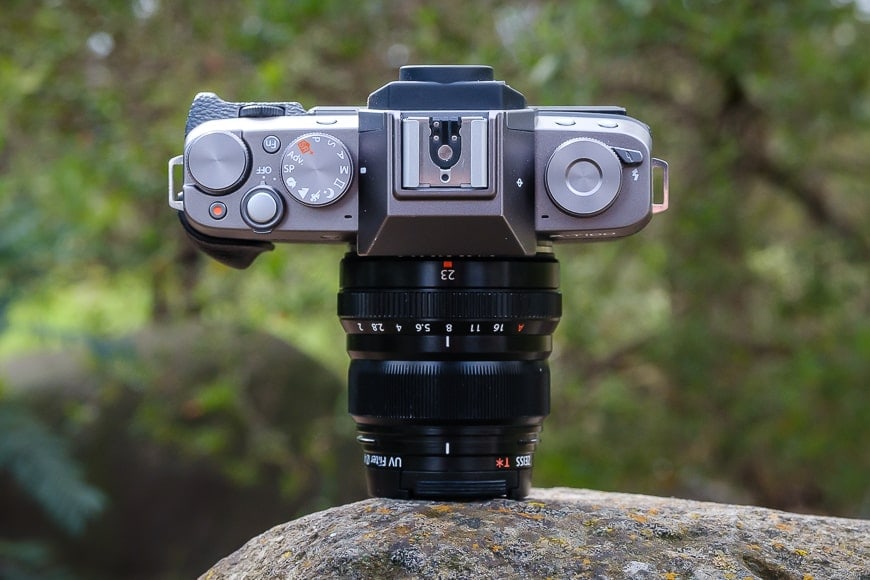
The Fujifilm X-T100 is a full-featured mirrorless system in a compact and sturdy body.
The Fujifilm X-T100 is the smallest of the Fujifilm X-T range, yet still holds true to that retro design most recognisable in the Fujifilm X-T3 and its predecessors.
Despite its tiny size this camera is still heavier than the Fujifilm X-T30, and just like that camera, it has a decent amount of weight when held in the hand.
The exterior of the camera is made of a fairly sturdy plastic on the top plate and base plate of the camera with the remainder being covered in the fake hide texture.
The Fujifilm X-T100 features some sturdy metal features such as the lens mount plate, the screw mount for a tripod, the metal lugs for attaching a strap and the camera hot-shoe.
These added features further enhance the solid and sturdy build of the camera. Equally, these little touches turn this camera into a more reliable and trustworthy product.
[📷 Related: Best Fuji Cameras]
The front of the camera is incredibly minimal with only the focus assist lamp featured. There are no other buttons or features other than the optional and removable grip that provides the necessary support when holding the camera.
This minimal look goes a long way to giving the camera that unique retro styling that Fujifilm X Series bodies are now well known for.
The rear of the Fujifilm X-T100 is dominated by the 3″ touch screen. This screen has a unique feature in that it folds out horizontally 180 degrees to allow for selfie and vlogging with ease.
The screen also tilts vertically up and down to allow for shooting from the hip or shooting above the head whilst still seeing the scene on the screen.

The Fujifilm X-T100 has many unique features including a pop-up flash.
There are minimal buttons on the rear of the camera and this allows for a clutter-free design. Buttons are all slightly raised and each returns a satisfactory click when pressed.
There is a rear command dial wheel that spins on a horizontal axis and only shows the top third of this wheel with the rest recessed into the housing.
The top plate hosts a range of dials beginning with the familiar command dial that allows for function and priority settings.
There are two other dials that are unmarked as these can be customised via menu options to set ISO, Shutter Speed, Exposure Compensation, etc.
Two function buttons also exist on the top plate along with the On/Off slide that sits below the shutter button.
All dials and buttons well designed and built from a solid material that ensures confident purchase and responsive clicks when turning.
The Fujifilm X-T100 has a built-in flash that pops up with the pull of a discreet lever. The mechanics of this spring-loaded flash are solid and durable with the flash hidden underneath the elevated hot shoe mount.
At the rear of this element, there is an eye cup for viewing the electronic viewfinder.
Ergonomics & Handling

The Fujifilm X-T100 has a true Fujifilm retro design and style.
Despite the tiny size of the Fujifilm X-T100 and the relatively large size of my hands, I didn’t feel at all awkward or uncomfortable carrying and shooting with it.
(Keep in mind that I generally shoot with a Fujifilm X-T3, the form and layout of the X-T100 were relatively familiar to me.)
I opted to use this camera with the optional front grip attached. This grip provides much greater purchase space, especially given that the front of the camera is free of dials and buttons.
Combined with the adequate thumb real estate and thumb grip on the back of the camera, you have a sturdy grip.
The weight of the Fujifilm X-T100 is so negligible that you can carry it all day hand-held and not be at all impacted by strain…yet it does not feel at all like a lightweight toy or cheap offering.
Furthermore, having this camera on a neck strap would produce very little strain and would make it a very comfortable camera to have slung around your neck for extended periods.
All of the button placements have been well thought-out and are of a size that is easy to recognise and press.
Despite the size of the camera, the top plate feels uncluttered with ample space between each dial to turn them or access the smaller function buttons.
One important thing that I noticed when using the touch screen to access functions or select a focal point, is that there was quite a bit of lag between touch and response.
I would select a focal point on the touch screen and just when I thought it had not registered I would tap again only to find it had finally caught up and my second touch was off.
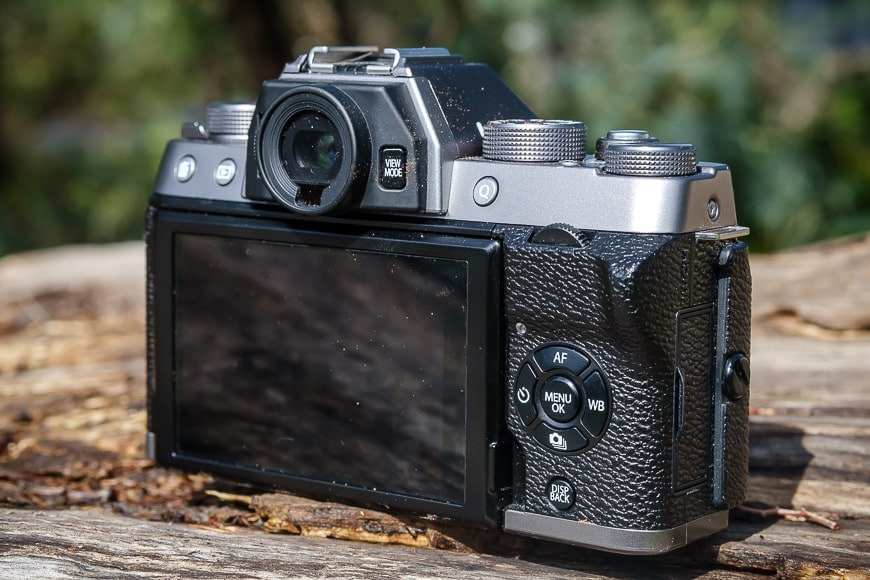
The rotating touch screen is a nice addition, but exhibits a slight lag.
You could also set the screen to perform a Touch Zoom with the included kit lens, an XC 15-45mm f/3.5-5.6 power zoom.
However, I had limited success in getting the lens to zoom in and out consistently with the swipe function. With more practice and perhaps more patience the use of the touch screen would become easier to use and master.
When the touch functions are active on the screen, I found that I would often accidentally change my focal point with the tip of my nose whilst I had the camera up to look through the EVF.
This was quite frustrating and resulted in me having to turn off the touch function of the screen completely.
(To be fair though, this is something that I also do with my Fujifilm X-T3 camera – perhaps the fault is with my nose!)
To flip and adjust the touch screen is quite easy with a small recess in the body allowing you to pry the screen out from the body with a finger.
The eyecup is made from quite a rigid plastic, and provides a bright and smooth view of the scene when in use.
The electronic viewfinder also includes an adjustable diopter and view mode to turn the EVF or the screen off.
Focus Performance
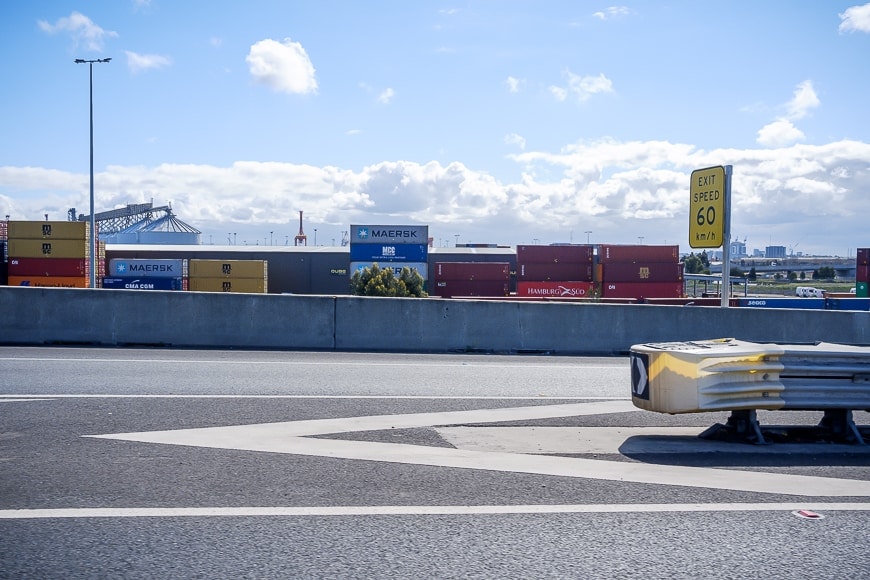
Fujifilm X-T100 + Fujifilm XF 23mm f/2 | 1/2000 f/8 ISO400 (shot from a car traveling at 80 kmh)
The Fujifilm X-T100 has a broad range of autofocus features that is comparable with its bigger siblings in the Fujifilm range.
However, the auto-focus performance is where this camera is let down, as it has a number of issues that would likely bother even a hobbyist photographer.
However, it is important to keep in mind that this is an entry-level camera aimed at people looking to transition from the smartphone photography scene.
I cannot deny that when shooting in any light with this camera, the autofocus is slow and sometimes unresponsive.
There is a noticeable delay in focus as the camera hunts before it locks on to the required subject.
When jumping from a near object to a far object it is even more noticeable even when I have a super-fast autofocus prime such as the Fujifilm XF 23mm f/2 attached.
🌋 Related: Best Fuji Lenses of the year
This camera also features face and eye detection settings that allow you to set it to autofocus on either the face only, the face and eye and then either a left or right eye which is a great feature for portrait shooting.
Face detect seems quite competent at recognising its subject and grabbing focus. However, as with the overall autofocus performance of this camera, the face-detect really struggles to keep up with a subject that is moving even a slight amount.
A focus point can also be selected via the LCD touch screen, however as mentioned earlier, this was hit and miss and not terribly accurate.
The LCD touch screen can be set to capture focus only with a touch of the screen or to focus and take a shot with the touch of the screen.
This can be a handy feature especially if shooting above your head or down low when you have the screen tilted to see your composition.
Low Light Performance

Fujifilm X-T100 + Fujifilm XF 23mm f/2 | 1/60 f/2 ISO6400
When shooting in low light with the Fujifilm X-T100, I found that the autofocus was able to secure its target in much the same way as in good light – i.e. a moment of delay but then a solid focus on the target even with the use of face detect.
This was surprising to experience the first time I shot in low light as I was expecting it to perform sluggishly.
With the right ISO, shutter speed and aperture, images captured in low light are crisp and noise-free even with JPEGs straight out of the camera.
RAW files are obviously more malleable to work with low light images, however in the cases I tested, minimal editing was required with RAW files in post-processing.
I have found this with pretty much every Fujifilm X Series camera I have ever used, so I shouldn’t really have been surprised, but there you have it.
Image Quality

Fujifilm X-T100 + Fujifilm XF 23mm f/2 | 1/2000 f/9 ISO800
Image quality is something that Fujifilm take very seriously when developing their cameras and supporting sensors and processors. This camera is definitely no exception to that rule
The Fujifilm X-T100 delivers beautifully rendered JPEGs and or highly workable RAW files depending on your preference. Fujifilm colour technology is second to none, and the colour qualities in the images from this camera are incredible and vivid.
When shooting in JPEG, the camera allows you to select from a number of popular Fujifilm film simulations that are replicated from original Fujifilm film stock.
An interesting features of this camera is that the left command dial is set by default to allow you to shuffle through each film simulation of the image you have in a composition.
On the LCD and in the EVF, you can see how the finished product will look with the film simulations and will also be provided with a brief description of the simulation.
This is a really nice touch, which makes the shooting experience even more enjoyable.

Fujifilm X-T100 + Fujifilm XF 23mm f/2 | 1/500 f/2.8 ISO6400
The Fujifilm X-T100 produces incredibly sharp and detailed images thanks to its sizeable 24.2-megapixel CMOS sensor.
That is no slouch when compared to the current flagship Fujifilm cameras such as the Fujifilm X-T3 using a 26.1-megapixel sensor.
Granted the sensor in the X-T3 is also of a higher quality, but the X-T100 sensor is pulling in almost as much information.
Overall Performance
The Fujifilm X-T100 is a great little entry-level camera with a full range of features.
Although the AF is a little sluggish, beginners or those transitioning from a smartphone are unlikely to notice any real impacts when shooting with this camera.
Another small thing to note is when switching the camera on, there is a noticeable ‘moment’ before the camera comes to life.
The same moments are experienced with the autofocus modes and the use of the touch screen for either accessing functions via a swipe or when selecting a focus point with a touch.
Again, I am used to a Fujifilm X-T3 that is super fast and responsive in every way. It is my hope that Fujifilm looks to enhance the performance speed of the X-T100 via a future firmware update – something that Fujifilm is well known for.
It is worth mentioning the Fujifilm XC 15-45mm f/3.5-5.6 power zoom lens, as this is bundled as the kit lens for this camera.
I have tested this lens whilst testing the Fujifilm X-T100 and have found it to be an OK entry-level lens, given that it would be great for vlogging and selfies thanks to its wide-angle.
However, this is a low performing XC lens that has a power zoom that is slow to respond and only exacerbates some of the slow autofocus issues.
Aside from those niggling issues, this camera is a fully-featured Fujifilm X Series camera that can only benefit from the wide range of Fujifilm lenses currently on offer.
Drop a Fujifilm XF 23mm f/2 lens or similar fast prime on the Fujifilm X-T100, and you have the perfect first camera for anyone that wants to create crisp, clear and creative images.
Video Performance
A worthy mention for this camera is its video capabilities. Whilst not a stellar performer compared to the higher level and flagship Fujifilm cameras such as the Fujifilm X-T3, it has some great options available for those wanting to experiment with video.
This camera will shoot 4K video however it is limited to 15 FPS for maximum recording time of 30 minutes.
The options for shooting in HD (1280 x 720) are far more attractive with 59.94p / 50p / 24p / 23.98p all with a continuous recording time of up to approximately 30 mins.
For the wannabe vloggers out there, this camera provides some appropriate options, and along with the built-in hot-shoe on the camera, external microphones can be added to this package.
Value for Money
The Fujifilm X-T100 is a fantastic entry-level mirrorless camera that will expose any user to the wonderful ecosystem of cameras and lenses that Fujifilm has developed.
Like all Fujifilm cameras, it has been well-developed to ensure that it is a capable and comprehensive offering to appeal to just the right market.
In terms of bundles, the the Camera + Fujifilm XC 15/45mm f/3.5-5.6 OIS lens combo will set you back just under $800.
That is a great offering for a camera that can be used with any of the Fujifilm X Series lenses and accessories on offer.
I highly recommend that either with the purchase or soon after you pick up this camera, that you get yourself a higher-performing lens such as the Fujifilm XF 23mm f/2 lens or the higher level kit lens in the Fujifilm XF 18-55mm f/2.8-4.
Such a move would surely broaden your shooting experience and outcomes.
Fujifilm X-T100 Review | Conclusion
The X-T100 is a true Fujifilm X Series camera, coming feature-packed and ready to pick up and play straight out of the box.
The classic Fujifilm X-T design is clear and obvious and goes a long way to support the features and usability of this offering.
It produces excellent images that are sharp, clear and benefit from the decades of Fujifilm colour technology with the use of Fujifilm film simulations.
The Fujifilm X-T100 is perfectly suited to shooters who have been using a smartphone for all of their photography.
With a camera such as this, the creative opportunities expand considerably and also provides the user with an experience that builds upon their knowledge in photography.
For those looking to downsize their bigger photography kit to something that they can carry as an everyday camera, then look no further.
The most exciting part of the Fujifilm X-T100 is that despite it being an entry-level offering, Fujifilm has an extensive range of prime and zoom lenses on offer at both entry-level and professional level that can be paired with this very camera.

Feature-packed pocketable camera with a stylish, retro vibe and great lens options.






